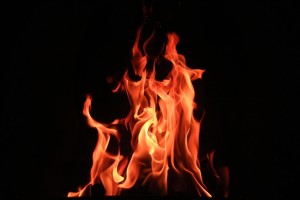When people look to build any form of architecture, they want to stand out from the crowd. Ours is a team that understands this. As a result, we think outside the box to help clients achieve what they want. Something else we do is ensure the designs meet all relevant standards and codes. It is vital to maximise safety and to ensure it is easier to get planning permission. Our skill and experience here makes us the foremost architects in London.
A vital fire safety code
There are some big changes on the horizon for BS 9991. This is a code of practice that supplies detailed guidance on making certain there is sufficient fire safety in residential structures. Initially introduced in 2011, it has acted as a foundational reference. This is for safeguarding lives, obtaining fire protection measures, and lowering property damage in the event of a fire. The standard applies to several building types. Examples are residential care homes, apartment blocks, and flats.
The code’s main goals are guaranteeing sufficient life safety during fires. It prioritises firefighter and occupant safety, and the wellbeing of other emergency responders. Also, it safeguards properties. Included here are businesses, neighbouring buildings, and the surrounding environment. By providing a unified approach to fire safety, BS 9991 bridges gaps in regulatory frameworks all over the UK. Moreover, it offers comprehensive solutions for fire safety challenges.
The key changes
 Now that you know about the code, we can discuss the key changes taking place. Last week we got the new version, BS 9991:2024. It replaces the previous 2016 version, with updates to ensure it reflects modern building designs. Everyone should be aware of the changes, from builders and developers to architects in London and elsewhere in the UK.
Now that you know about the code, we can discuss the key changes taking place. Last week we got the new version, BS 9991:2024. It replaces the previous 2016 version, with updates to ensure it reflects modern building designs. Everyone should be aware of the changes, from builders and developers to architects in London and elsewhere in the UK.
One change is the expansion of the scope. Residential care homes are included, with a change recognising their particular fire safety and evacuation challenges.
Another change is with timber usage. Restrictions on the reaction-to-fire classifications for load-bearing timber elements are no longer part of the code. This reflects existing evidence on mass timber use in medium and high-rise residential structures.
There’s also been revised sprinkler and single-stair guidance. Updates include a new height restriction for single-stair structures. New recommendations for sprinkler installation exist too.
Fire door classifications have had a change. National classifications have been replaced with European standards. As a result, it will provide greater reliability and consistency.
Another change is smoke control and evacuation lift recommendations. Upgraded provisions for tall structures lead to superior safety in fire emergencies.
Lastly, there are updates to ancillary areas, kitchens, and exterior wall systems. The new guidance utilises the latest safety practices for these essential areas.
Get advice from the top architects in London
At Coffey Architects, we offer individual architectural services and comprehensive solutions. Everyone has their own needs to meet. We take this approach to make helping them easier. Additionally, it means we can tailor our work to suit each client, letting them decide how they want to work.
So, if you have an idea and wish to work with the finest architects in London, talk to us. We’d love to help, including looking at different codes and standards to make sure designs are compliant.
